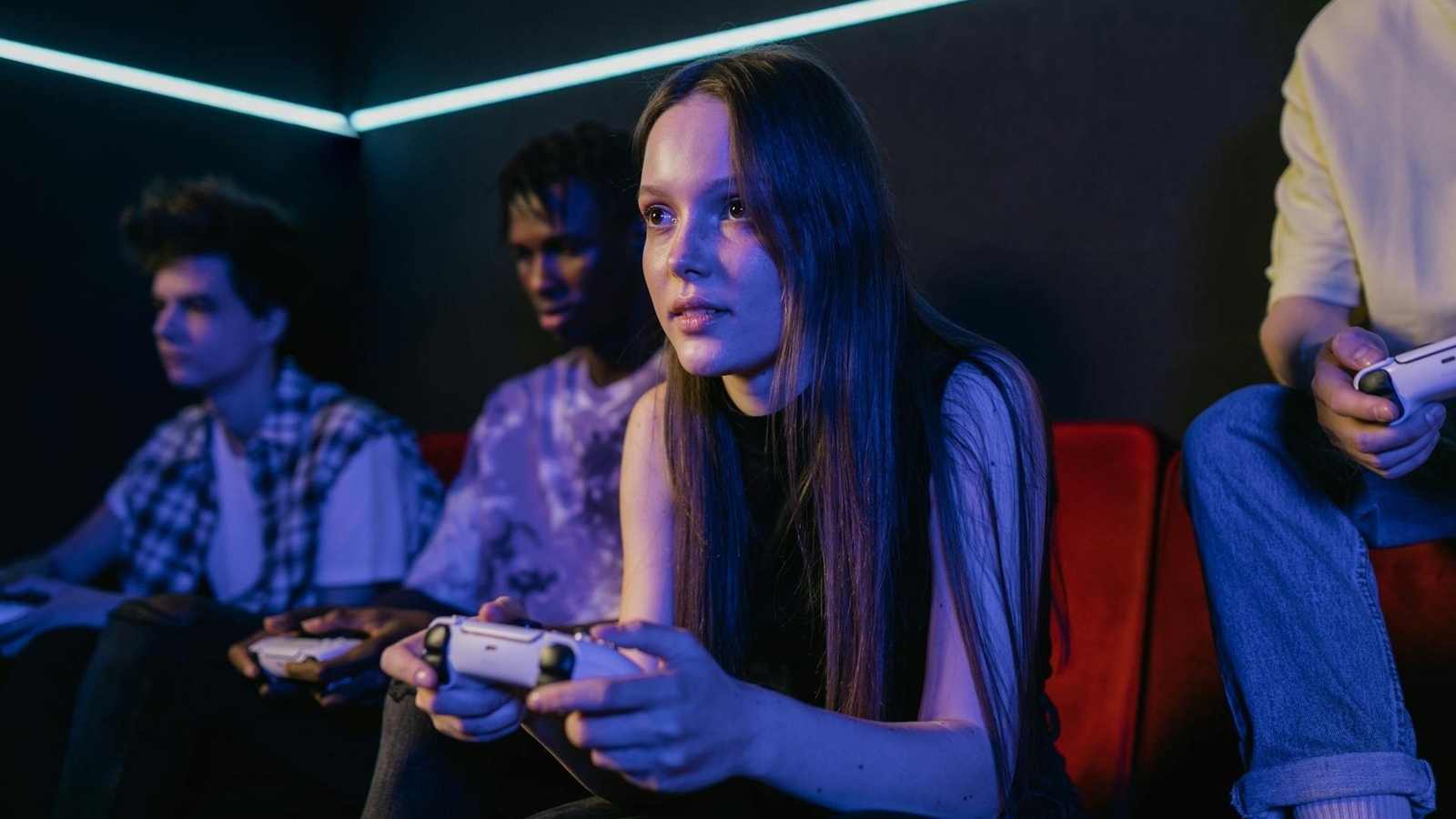Several years ago, the hotelier Nicolas Saltiel stood in front of an office building on the northern edge of the Japanese quarter in Paris. The early 20th-century Haussmann-style block sat on a corner, so he could tell from the sidewalk that the light would be good. It was in the Second Arrondissement and, from the top floors, he guessed, you might be able to see the dome of Sacré-Cœur in Montmartre. (You can.) “I knew if I could manage to buy it, this place would make a perfect, intimate hotel,” Saltiel says.
Saltiel’s company, Adresses Hotels, owns five other small hotels in Paris, each of them with a distinct look and atmosphere. For Hotel Hana and its 26 bedrooms, the architect and designer Laura Gonzalez chose to highlight the hotel’s proximity to Little Tokyo, which includes the Japanese shops and restaurants on Rue Sainte-Anne, a five-minute walk away. “The source of inspiration is Japonisme, an artistic movement that emerged during the Belle Époque period,” says Gonzalez. Japanese building techniques and materials, like paneled partitions, straw walls and lacquered furniture, appear alongside French adornments like velvet headboards and rugs made by Pierre Frey. At the bar, you can order an egg sando and wash it down with a glass of Burgundy. Rooms from about $425, hotelhana-paris.com.
See This
An Artist’s Many Views of the Male Body
“The Male Nude,” an exhibition of the artist Paul Cadmus’s paintings and drawings, opens this week at Manhattan’s DC Moore Gallery. It’s the artist’s first major solo show in over 20 years. Though he gained acclaim beginning in the 1930s with works like “The Fleet’s In!” (which also stirred controversy for its particularly callipygian depiction of American sailors engaging in debauchery), he painted just 135 canvases over the nearly eight-decade span of his career, sometimes only completing one a year. “We don’t paint for stock,” Cadmus used to say, according to the gallerist Bridget Moore, who worked with him for 15 years. His paintings contain symbolic and satirical details: In 1951’s “Manikins,” two (presumably male) wooden figurines are shown locked in an embrace atop a stack of books; close inspection reveals the topmost volume is a copy of André Gide’s anonymously published “Corydon,” in which the French author argued that homosexuality is a natural condition. In his paintings, Cadmus never repeated subject matter or included the same character twice. He was more prolific with his drawings, which are imbued with a sense of reverence for the human form. This show highlights his serially numbered nudes, most of which are drawn in crayon on hand-toned paper. Works from the 1930s to 1990s are included, offering viewers plenty of angles from which to appreciate Cadmus’s undulating bodies. “The Male Nude” is on view at DC Moore Gallery, New York, from Feb. 8 to March 16, dcmooregallery.com.
When the London-based design studio Campbell-Rey first collaborated with the textile company Nordic Knots in 2021, the result was a collection of color-drenched rugs that paid playful homage to Gustavian design elements, referencing the Swedish style popular in the late 1700s. Charlotte Rey, a co-founder of Campbell-Rey, wondered at the time if their creations were too exuberant for those accustomed to the Stockholm-based brand’s typically minimalist aesthetic. But the response was enthusiastic enough that, three years later, the two are joining forces again.
The second Nordic Knots x Campbell-Rey collection reimagines the motifs of the first in a series of rich jewel tones. The Garden Maze rug, a hedgerow-inspired geometric grid, is rendered in a series of bright blues, while Folding Ribbon, which features rows of sharp zigzags, has been recast in shades of auburn and burgundy. The Climbing Vine rug has been refreshed with an olive green background bordered by chartreuse tendrils. The collection also includes a wool curtain in a pale, airy green meant to evoke the Nile River. “We talk a lot about color being delicious,” Rey says of the lush hues that captivate her and her creative partner, Duncan Campbell. The pair drew inspiration for their vibrant palette from Denmark’s Thorvaldsen Museum, which is named for the neoclassical sculptor Bertel Thorvaldsen and served as the backdrop for the collection’s lookbook. The museum shows Thorvaldsen’s work alongside Greek, Roman and Egyptian architecture. “That really appealed to us,” Campbell says of the museum’s joyous mash-up. “We’re never afraid to take two things that totally shouldn’t go together and make them friends.” Rugs from $1,095; curtains from $390, nordicknots.com.
Wear This
A New Donna Karan Collection Revives the Brand’s Archive
In 1985, models wearing nothing but black, leotard-like bodysuits, tights and heels opened Donna Karan’s runway show during New York Fashion Week. The collection, titled “Seven Easy Pieces,” was the designer’s solo debut after 11 years at Anne Klein, and it was meant to offer the stylish working woman a practical-but-not-boring capsule wardrobe that could take her from day to night, all week long. The bodysuit, which featured various necklines and was styled with belts at the waist, was the foundational piece. As models walked the runway, they added layers — skirts, pants, jackets and sweaters — as though they were getting dressed to head out the door. Now, almost 40 years later, the line is back in the form of a full Spring 2024 collection, reimagined for the modern woman by Donna Karan’s in-house studio team. (Karan herself is no longer involved with the company — she stepped down in 2015, a year before it was sold.) “Seven Easy Pieces” has been recast as a “System of Dressing,” but the spirit of the collection is still intact. Models including Linda Evangelista and Cindy Crawford, who walked repeatedly in Karan’s shows, even starred in the campaign. Longtime fans and newcomers will find black and white body-hugging dresses with Ms. Karan’s signature — and originally quite provocative — cutouts; soft stretch knit suiting options; a tough-looking crinkled nylon trench; and even a sequined evening gown. There’s also, of course, the bodysuit, which could function as a perfect Zoom top today (pants optional). From $159, donnakaran.com.
In 2020, António Costa Lopes and Filipa Fortunato decided to sell the building that housed Casa Fortunato, the small Lisbon hotel they’d opened two years earlier, and move the operation to the countryside. The couple had previously acquired an 18th-century home in Alcácer do Sal, an old port town a 45-minute drive from the capital, thinking it could be a satellite property, but why not make it the main event, especially given the nearby and booming beaches of Comporta and Melides? To do so, they updated the building’s systems — leaving its original structure and flourishes, such as abstract blue-on-white murals on the walls of the staircase, untouched — then added some new design pieces to the eclectic collection they’ve been amassing since they met as architecture students in the ’90s: Bulrush Superligeira chairs by the pioneering Portuguese modernist Daciano da Costa, Vibia lights that hang from conductive textile straps, a Sergio Rodrigues pea green leather couch from the ’50s.
The pair also revamped the building’s courtyard, planting shrubs and fruit trees and covering the floor with multicolored stripes of hydraulic tiles. This is where, in the warmer months, guests will sit by the pool and enjoy breakfast. Otherwise, they’ll gather around one long table by a fireplace for meals. While the first Casa Fortunato was decidedly homey — Costa Lopes, Fortunato and their children lived just upstairs from their guests, in the attic — this new iteration (with six main bedrooms and a stand-alone guesthouse tucked behind the pool) is even more so. There’s only one kitchen and, if Costa Lopes and Fortunato plan to salt-bake a fish, say, they’ll invite their guests to join them for dinner. (Costa Lopes can usually be persuaded to make his famous pavlova for dessert, too.) Similarly, there might be days when, instead of relying on a skipper to take people out on their eight-person motorboat, the couple will be free to give tours of the Atlantic coastline themselves. Casa Fortunato opens March 1; rooms from about $270 a night, casafortunato.com.
Consider This
Vintage Furniture Upholstered in Pajama Prints
Tobias Vernon, the founder of the gallery and design studio 8 Holland Street met Molly Goddard, the co-founder of the vintage-inspired pajama brand Desmond & Dempsey, over orange wine at a launch party in her south London studio. When they bonded over a shared love of leisure time and, as Goddard puts it, “how our most intimate surroundings play into our mood,” a home goods collaboration was born. Vernon — whose online boutique sells midcentury design classics such as armchairs clad in the Bauhaus hero Anni Albers’s woven tapestries — sourced several pieces of furniture: a 1950s curvilinear Italian sofa with stained beech feet and, from the 1960s, a pair of French cubic armchairs on a painted steel base and a shell-shaped woven rattan chair by the wicker master Vittorio Bonacina. Goddard then chose the upholstery fabric from her label’s existing pajama prints. Two patterns were lifted from the Desmond & Dempsey archives: Chango, a punchy blue-and-peach monkey print, which is repeated across the contours of the sofa; and Medina, a fruit salad of chunky stripes with a hand-drawn look in juicy hues that covers the chair set. Marque, a swirling black-and-white ’70s print, was selected from Desmond & Dempsey’s latest collection to embellish the wicker seat’s cushion. From $2,200 for the wicker chair, desmondanddempsey.com; 8hollandstreet.com.

























